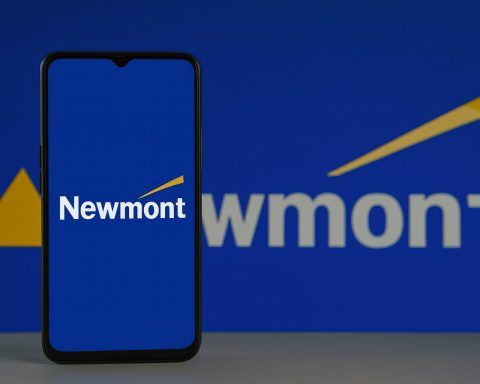- Stock Price & Market Cap: ~$5.00 per share as of Oct 30, 2025, up about 3–4% after earnings, valuing the company around $3.0 billion [1]. Shares have rebounded ~27% in the past quarter [2] but remain far below their 52-week high of $6.34 (low of $3.51) [3] [4].
- Sector: Healthcare REIT (Real Estate Investment Trust) specializing in hospital properties [5]. One of the world’s largest hospital landlords with ~392 facilities and 39,000 beds across nine countries [6] [7].
- Recent Earnings:Q3 2025 normalized funds from operations (NFFO) of $0.13 per share (down from $0.16 a year ago [8]) beat analyst expectations, which were near breakeven [9]. Revenue of $237.5 million came in around forecasts (consensus ~$235–242M) [10], marking a slight year-over-year increase and signaling stabilization in leasing operations [11].
- Latest News: Management announced a $150 million share repurchase authorization, citing confidence in the company’s value and liquidity [12]. Cash rent collections improved to $16 million in Q3 (up from $11 M in Q2) with 96% of due rents collected [13], and are expected to reach ~$22 million in Q4 as troubled hospitals are re-leased. The company settled a major tenant dispute – a $45 million payment from Yale New Haven Health to bankrupt Prospect Medical – which, along with hospital sales, is expected to fully recoup a $105 million loan MPT made to that tenant [14] [15].
- Dividend: Pays a quarterly dividend of $0.08 per share (annual $0.32). After two deep cuts in the past two years (from $0.29 to $0.15 in 2023, and to $0.08 in late 2024), the dividend yields about 6.5% at the current stock price [16] [17]. The payout was held at $0.08 this quarter [18] as the company prioritizes strengthening its balance sheet.
- Short Interest:Heavy short bets against MPW persist – roughly 156 million shares short as of mid-October, about 37% of float (26% of all outstanding shares) [19]. This makes MPW one of the most shorted REITs, though short interest has ticked down slightly in recent months from ~40% of float [20].
- Institutional & Insider Activity: Institutions own over half of MPW’s shares (approx. 58% per recent filings) [21]. Major holders include index funds like Vanguard and BlackRock. Insider ownership is relatively high at ~17% [22] – CEO Edward K. Aldag Jr. and other insiders have significant stakes, and a board member even bought shares earlier in 2025, signaling confidence. Recent insider transactions were mostly routine, while the new buyback plan could retire ~5% of shares if fully executed.
- Analyst Sentiment: Cautious. Of 7 analysts, only 1 rates MPW a Buy, with 4 Holds and 2 Sells – consensus rating is essentially “Reduce” [23] [24]. The average 12-month price target is about $5.40, only ~6% above current levels [25] [26]. Targets range from $4 (bearish) to $9 (bullish outlier) [27]. Analysts remain concerned about hospital tenant risks and leverage, even as some acknowledge the deep value (the stock trades at only ~0.6 times book value [28]).
- Comparables: Other healthcare REITs like Welltower (WELL) and Ventas (VTR), which focus on senior housing and medical offices, have performed better recently and yield ~3–4%. Skilled nursing REITs such as Omega Healthcare (OHI) and Sabra (SBRA) yield higher (8–9%) but have steadier payouts. MPW’s 6+% yield and steep discount reflect its unique challenges as a hospital-focused REIT with concentrated tenant exposure.
- Sector Trends: Hospital operators continue to face post-pandemic pressures – labor costs, payer mix issues, and in some cases bankruptcies – directly impacting MPW’s tenants. However, patient volumes and revenues are recovering: MPT noted rising admissions and stable rent coverage across its acute care and behavioral health facilities in the U.S. and Europe [29] [30]. The broader REIT sector has been weighed down by high interest rates, but with the market now anticipating potential rate cuts in the next year, interest-rate-sensitive stocks like MPW could see sentiment improve. Investors are closely watching if MPT can navigate debt maturities and maintain occupancy until monetary relief arrives.
Q3 Earnings Surprise and Portfolio Updates
Medical Properties Trust’s third-quarter results provided a dose of relief for investors who have endured a turbulent year. Normalized FFO came in at $0.13 per share, comfortably ahead of what many analysts had expected (consensus was near $0.08, with some forecasts as low as essentially breakeven) [31]. This key profit metric for REITs was down from $0.16 a year ago [32], reflecting ongoing challenges, but the “beat” versus expectations drew focus. “Investors responded positively to the earnings beat and management’s optimistic commentary,” noted ChartMill, after MPW shares rose about 2–3% in pre-market trading on the report [33]. Revenue was $237.5 million, roughly flat year-over-year and slightly above Wall Street estimates around $235–240 million [34]. While essentially stable, this topline performance indicates a possible end to the revenue declines that had worried investors during tenant upheavals, suggesting the core hospital portfolio is stabilizing.
Net income remained negative (a net loss of $78 million, or -$0.13 per share, for Q3) due largely to non-cash charges [35]. In fact, the company took about $82 million in impairment expenses tied to the bankruptcy of Prospect Medical Holdings, one of its troubled tenants [36]. However, these charges were already anticipated by the market. Crucially, MPW’s funds-from-operations excluding one-offs covered its dividend with a cushion this quarter, easing immediate payout safety concerns.
The earnings release highlighted tangible progress on MPW’s two biggest trouble spots: Prospect Medical Holdings and Steward Health. Prospect operates several hospitals that MPW owns, and its financial distress had led to missed rent and emergency financing from MPW. In September, MPW announced a settlement with Prospect and Yale New Haven Health System. Under that deal, Yale (which had previously agreed to buy Prospect’s Connecticut hospitals but pulled out) will pay $45 million in cash, and MPW and Prospect will release Yale from the purchase obligation [37]. That $45 million, plus proceeds from the now-planned sale of those three Connecticut hospitals to new operators, is expected to fully repay MPW’s debtor-in-possession (DIP) loan of about $105 million to Prospect [38]. In other words, MPW should recover all the cash it fronted to keep Prospect’s facilities running [39] – a significantly better outcome than many had feared a few months ago.
Additionally, Prospect found a new buyer/operator (NOR Healthcare) for its hospitals in California, which were another major uncertainty. MPW has agreed in principle to lease those facilities to NOR, with expected stabilized rent of $45 million annually once regulatory approvals and a transition period are complete [40]. This would restore a huge chunk of lost rental income by 2026. And in August, MPW sold two Arizona hospitals (with minimal rent) back to their operator for ~$50 million [41], converting non-earning assets to cash. These moves are all part of what the company calls “capital recycling” – selling or re-leasing assets that aren’t contributing much, and using proceeds to fortify the balance sheet.
In an earnings call and press statement, CEO Edward K. Aldag Jr. struck an upbeat tone about these developments. “Our recently transitioned portfolio continues to ramp cash rents as expected,” Aldag said, noting that after re-tenanting the California hospitals, annualized cash rent is on track to exceed $1 billion by the end of 2026 [42]. He highlighted that 96% of scheduled rents were collected through October as new operators settle in [43]. The improved rent collections – $16 million cash collected in Q3 vs. $11 million in Q2, with ~$22 million expected in Q4 [44] – show that the worst of the rent deferrals may be over. Aldag also expressed confidence in tackling upcoming debt maturities, given asset sale proceeds and recovering cash flow. In fact, the company is so confident in its liquidity that it is turning some of that cash toward its own stock.
$150 Million Buyback and Dividend Outlook
One of the most attention-grabbing news items was MPW’s announcement of a $150 million share repurchase program – roughly 5% of its market cap. Such buybacks are rare for REITs (which typically return cash via dividends), and the move signals that management sees the stock as deeply undervalued. “With cash rents ramping and increased opportunities to turn low-yielding assets into cash, we have growing flexibility to address our near-term debt maturities,” said CEO Aldag, “and…we feel comfortable with our liquidity and believe strongly that MPT stock is one of the best investments we can make.” [45] This bold statement underscores management’s view that the stock, languishing around $5, is a bargain. The buyback authorization gives the company leeway to purchase shares in the open market or via negotiated transactions, though it is not obligated to use the full amount [46] [47]. How aggressively MPW actually repurchases will likely depend on its cash needs for debt repayment and acquisitions, but the authorization alone sent a confidence signal. It comes on the heels of MPW cutting its dividend twice in the past two years, so investors welcomed any form of shareholder return.
On the dividend, Medical Properties Trust maintained its quarterly payout at $0.08 per share (paid in October) [48]. This is down sharply from the $0.29 quarterly rate it paid as recently as early 2023, after two painful cuts when earnings fell and tenants stopped paying. At the current rate, the dividend yields about 6.4% [49] – still quite high, but much lower than the eye-popping double-digit yield it had when the stock plunged and before the cuts. The reduced dividend has been a prudent move to conserve roughly $400 million annually in cash. With normalized FFO at $0.13 this quarter, the payout ratio is around 62% of NFFO, which is reasonably conservative for a REIT. Executives have indicated that stabilizing the payout at $0.08 and eventually growing it again is a goal, but only when coverage improves. Notably, some analysts now speculate the dividend has finally bottomed out. The Motley Fool recently noted MPW’s dividend could “start heading higher in 2026 and beyond” as the company’s finances heal [50]. For now, management’s priority appears to be deleveraging and buying back undervalued shares – both of which, if successful, would ultimately support a healthier dividend in the future.
Stock Performance and Market Reaction
MPW’s stock has been on a wild ride. Over the past month (prior to earnings), the share price drifted downward about 10% amid broader REIT weakness and pre-earnings jitters [51]. In the week leading up to results, it was down ~4% [52], closing at $4.86 on Oct 29 [53]. The Q3 report reversed that slide, with the stock popping back above $5.00. In intraday trading on Oct 30, MPW hovered around $5.03 (+3–4%) [54] [55]. This is still closer to the low end of its range this year – the stock hit a 52-week low of $3.51 during the worst of the pessimism [56], and peaked around $6.34 at one point [57]. Year-to-date, however, MPW has actually gained about 27% in price [58] (after a brutal -60% plunge in 2022–2023). Including dividends, the one-year total return for shareholders is roughly +19% [59]. This reflects a dramatic rebound off the bottom earlier in 2025, when fears of insolvency and a dividend elimination were at their peak. The stock’s partial recovery shows improving sentiment, but also how far it remains below former highs (it traded above $20 in early 2022 before any tenant issues emerged).
Whether this rebound has room to run is a matter of debate. Valuation metrics certainly paint MPW as cheap – at ~$5, it trades at approximately 5.5 times 2025 FFO (annualized) and just 0.6x book value [60]. Such levels are more typical of distressed stocks than stable REITs. Indeed, some see it as a classic deep-value play now. One analysis calculated a fair value around $6.50–$7 based on a discounted cash flow model, suggesting the stock was about 23% undervalued even after the recent rally [61]. Another narrative, however, pegs fair value closer to $4.86 – essentially where the stock trades – implying that the current price already reflects a tough but realistic outlook [62]. As a recent TS2.Tech market commentary put it, “the debate centers on timing and the sustainability of any rebound”, cautioning that investors are weighing if the recent uptick “signals renewed upside or reflects already priced-in recovery in the REIT sector.” [63] In short, bulls argue that as tenant issues resolve and interest rates eventually ease, MPW’s high yield and asset values make it a bargain. Bears counter that any misstep – another tenant default or credit scare – could send shares tumbling again, and that the company’s leverage leaves little margin for error.
It’s worth noting that broad market conditions are a big factor in MPW’s stock performance. As a high-yield, heavily leveraged REIT, MPW is sensitive to interest rate moves. This year’s surge in bond yields (the U.S. 10-year Treasury hit ~5% recently) hurt all REIT valuations. However, the prospect of the Federal Reserve cutting rates in 2024–2025 has started to perk up income stocks. In fact, the market appears to be pricing in multiple Fed rate cuts over the next year, which, if they materialize, could relieve pressure on REITs [64]. Any sign of inflation easing or a confirmed shift to a rate-cutting cycle may disproportionately benefit beaten-down names like MPW, by lowering borrowing costs and improving the outlook for its hospital tenants’ profitability (since hospitals also feel the squeeze of high interest on their debts).
Heavily Shorted, Heavily Scrutinized
One reason MPW’s every move has been amplified is the presence of heavy short-selling. With roughly 156 million shares sold short (as of Oct 15) [65], MPW has one of the highest short-interest ratios of any mid-cap stock. That equates to about 37% of the public float tied up in bearish bets [66]. These short-sellers (including some prominent hedge funds) have been vocal, questioning everything from MPW’s tenant accounting to its acquisition prices. Over the past two years, critical research reports accused MPW of being overly cozy with its tenants and overly optimistic in valuing leases – essentially arguing the company was masking tenant financial strain until it blew up. Indeed, some of the shorts’ warnings proved prescient as Prospect and other tenants faltered.
However, with the stock already down over 70% from its peak, the short thesis may be losing steam. Short interest has ticked down from around 40% of float mid-year to ~31% recently [67] [68], suggesting some bears have covered their positions as news has improved. The company’s moves to increase transparency and address concerns – such as publishing a detailed letter from the CEO rebutting “misinformation” and now delivering on asset sales – have helped restore some credibility. If the Q3 report’s momentum continues (higher rent collection, debt reduction, etc.), there is potential for a classic “short squeeze” scenario where sustained good news forces more shorts to buy back shares. “The company is trading below its book value, with a strategic focus on asset sales to reduce short interest,” noted a GuruFocus analysis, pointing out that monetizing assets could directly undermine the bearish case [69].
From the institutional investor side, the stock’s travails have not gone unnoticed. Many large funds trimmed their MPW holdings over the last year, but some value-oriented investors have been bottom-fishing. For instance, certain REIT-focused mutual funds and ETFs (like Vanguard’s VNQ) still hold substantial positions [70]. BlackRock and Vanguard together own roughly 15% of the company through various index funds. Notably, insiders have mostly held onto their shares. CEO Ed Aldag has not sold stock during the downturn (aside from automatic tax withholding sales) – in fact, he purchased additional shares in previous years and currently owns several million shares, aligning his interests with shareholders. In March 2025, director James Hanna reportedly bought stock on the open market, a small insider buy that was seen as a vote of confidence [71]. While insider buying has been limited, the new buyback program effectively represents insider conviction at the corporate level.
All that said, skepticism from Wall Street analysts remains high. Firms like Wells Fargo and RBC Capital downgraded MPW in 2024 and cut their price targets into the mid-$4 range [72] [73], and many have maintained neutral or negative ratings through this earnings cycle. The average target price of ~$5.40 suggests analysts see only modest upside ahead [74]. Key concerns cited include MPW’s debt load – about $9.5 billion of debt, much of it fixed-rate but some refinancing will be needed by 2026 – and its tenant concentration (Steward Health and Prospect, even post-restructuring, will account for a significant portion of rent). Until MPW demonstrates a full year or more of steady results without new surprises, some analysts prefer other healthcare REITs with cleaner stories.
Outlook: Cautious Optimism in a Healing Sector
Looking forward, Medical Properties Trust faces a balancing act. On one hand, industry fundamentals for hospitals are gradually improving: hospital admissions are rising, and operators are adapting to labor cost inflation (with many reporting better margins as travel nurse expenses fall) [75] [76]. Governments and larger health systems are also stepping in to ensure critical hospitals don’t fail, which indirectly supports landlords like MPW. The worst-case fears of a cascade of hospital closures have not materialized; instead, we see restructuring, sales, and new partnerships like MPW’s deal with Yale/New Haven and NOR Healthcare. This suggests MPW’s assets still have value and viable operators, even if the original tenants stumble.
On the other hand, MPW must continue to de-risk its portfolio and balance sheet. That means possibly selling more properties or joint-venturing, using proceeds to pay down debt. The company’s update affirmed that it has $14.9 billion in assets on the books [77]; even after recent writedowns, its stated book value is around $8 per share. Realizing that value for shareholders will depend on execution: successfully leasing or selling hospitals at reasonable prices, and ensuring new tenants keep up with rent. Any significant shortfall in rent (AFFO) could pressure the dividend again or scuttle the buyback plans. Investors will also watch upcoming earnings reports closely – analysts expect around $0.03 FFO per share in Q4 (a seasonally weaker quarter) [78], and about $0.14 in FY2025 EPS (net profit) as some one-time charges abate [79]. Hitting or exceeding those targets would go a long way to rebuilding confidence.
In the context of peers, MPW’s valuation gap could narrow if it proves its turnaround. For example, large-cap peers Welltower and Ventas currently trade at 15–20x FFO – a rich multiple reflecting their stable senior housing portfolios. MPW trades at barely 5x FFO. Even accounting for its higher risk, any convergence toward the sector norm could mean substantial upside. It helps that healthcare real estate as a whole is seeing renewed investor interest due to aging demographics and the defensive nature of healthcare assets. Analysts at BNP Paribas earlier this year upgraded MPW to Outperform (with a $9 target) on the thesis that the stock had overcorrected [80] [81]. While that optimism is in the minority, it underscores the potential if MPW can deliver a few clean quarters. In contrast, Wells Fargo’s analyst maintains an Underweight and warns that MPW is still a “show me” story, needing consistent cash flow improvement before it deserves a higher multiple [82] [83].
For now, Medical Properties Trust has bought itself some breathing room. The combination of an earnings beat, a new buyback, and tangible progress on tenant issues has shifted the narrative – from one of imminent crisis to one of cautious optimism. The stock’s high yield and low valuation reflect the lingering risks, but also offer patient investors a potentially attractive reward if the company’s turnaround plan stays on track. As one market commentator observed, “Traders are weighing whether the move signals renewed upside or reflects already priced-in recovery” [84]. In the coming quarters, MPW will aim to prove that this recovery is real and that it can indeed defy the skeptics, to the benefit of shareholders and the healthcare systems it partners with.
Sources: Medical Properties Trust Q3 2025 Press Release [85] [86]; ChartMill analysis [87] [88]; TS2.Tech market commentary [89]; GuruFocus data [90] [91]; Finviz and Benzinga market data [92] [93]; Analyst ratings from MarketBeat [94] [95]; Company filings and investor presentations.
References
1. finviz.com, 2. ts2.tech, 3. www.gurufocus.com, 4. www.gurufocus.com, 5. finviz.com, 6. ir.medicalpropertiestrust.com, 7. ir.medicalpropertiestrust.com, 8. www.businesswire.com, 9. www.chartmill.com, 10. www.chartmill.com, 11. www.chartmill.com, 12. www.businesswire.com, 13. www.businesswire.com, 14. ir.medicalpropertiestrust.com, 15. ir.medicalpropertiestrust.com, 16. finviz.com, 17. www.gurufocus.com, 18. www.businesswire.com, 19. www.benzinga.com, 20. www.benzinga.com, 21. finviz.com, 22. finviz.com, 23. www.marketbeat.com, 24. www.marketbeat.com, 25. www.marketbeat.com, 26. www.marketbeat.com, 27. www.marketbeat.com, 28. finviz.com, 29. www.businesswire.com, 30. www.businesswire.com, 31. www.chartmill.com, 32. www.businesswire.com, 33. www.chartmill.com, 34. www.chartmill.com, 35. www.chartmill.com, 36. www.chartmill.com, 37. ir.medicalpropertiestrust.com, 38. ir.medicalpropertiestrust.com, 39. ir.medicalpropertiestrust.com, 40. www.businesswire.com, 41. ir.medicalpropertiestrust.com, 42. www.businesswire.com, 43. www.businesswire.com, 44. www.businesswire.com, 45. www.businesswire.com, 46. www.stocktitan.net, 47. www.stocktitan.net, 48. www.businesswire.com, 49. finviz.com, 50. www.fool.com, 51. www.chartmill.com, 52. www.chartmill.com, 53. www.morningstar.com, 54. finviz.com, 55. finviz.com, 56. www.gurufocus.com, 57. www.gurufocus.com, 58. ts2.tech, 59. ts2.tech, 60. finviz.com, 61. ts2.tech, 62. ts2.tech, 63. ts2.tech, 64. www.rttnews.com, 65. www.benzinga.com, 66. www.benzinga.com, 67. www.benzinga.com, 68. finviz.com, 69. www.gurufocus.com, 70. finviz.com, 71. www.secform4.com, 72. www.marketbeat.com, 73. www.marketbeat.com, 74. www.marketbeat.com, 75. www.businesswire.com, 76. www.businesswire.com, 77. www.businesswire.com, 78. finviz.com, 79. finviz.com, 80. www.marketbeat.com, 81. www.marketbeat.com, 82. www.marketbeat.com, 83. www.marketbeat.com, 84. ts2.tech, 85. www.businesswire.com, 86. www.businesswire.com, 87. www.chartmill.com, 88. www.chartmill.com, 89. ts2.tech, 90. www.gurufocus.com, 91. www.gurufocus.com, 92. finviz.com, 93. www.benzinga.com, 94. www.marketbeat.com, 95. www.marketbeat.com







